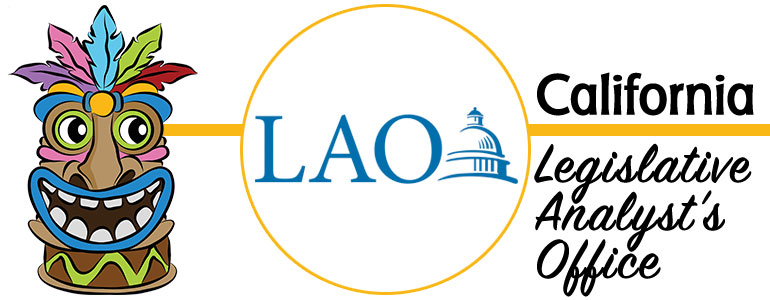
Our office will publish shorter, more focused budget analyses over the next few months. In most cases, rather than sending out an announcement for each publication, we will provide periodic updates with the key takeaways from recent pieces. All of our 2023-24 budget analyses to date can be found here.
The 2023-24 Budget: Analysis of the Governor’s Major Behavioral Health Proposals
Recommend Only Providing Funding for CARE Program in 2023‑24 to Allow for Robust Assessment of Ongoing Funding Requirements. As a part of implementing the Community Assistance, Recovery, and Empowerment (CARE) program, the Governor proposes $22.6 million General Fund in 2023-24, increasing to $114.6 million General Fund by 2025-26 and ongoing, for the Department of Health Care Services (DHCS) to provide training, collect data, and distribute grants to counties. Due to the significant uncertainty in estimating the level of program participation and costs in future years, we recommend that the Legislature only approve the first year of requested funding and require regular data reporting from courts, counties, and DHCS to inform the ongoing costs of the program.
More Information Needed on Community-Based Continuum Demonstration Proposal. The Governor proposes $314 million General Fund ($6.1 billion total funds) over five years for a new program requiring federal waiver approval—the California Behavioral Health Community-Based Continuum Demonstration—that would allow counties to receive federal reimbursement for mental health services provided in settings in which federal funding is currently unavailable. While the proposal appears to fit within the state’s broader efforts on expanding access to behavioral health services, much information is lacking to fully evaluate the administration’s proposal. We recommend that the Legislature request information about the administration’s multiyear spending plan and assumptions on the net fiscal impact to the state and counties of the proposal in upcoming budget hearings.
The 2023-24 Budget: The California Department of Corrections and Rehabilitation
Take Steps to Avoid Unnecessary Costs of Empty Prison Beds. Despite the administration’s plans to deactivate certain facilities by 2025, state prisons are expected to have about 15,000 empty beds in 2023-24, growing to 20,000 by 2027. Without a plan to reduce excess capacity, the state is at risk of incurring unnecessary prison operational and infrastructure costs. We recommend the Legislature take steps to seek information from the administration to develop capacity reduction targets and inform budget decisions, such as deactivating additional prisons.
Direct California Department of Corrections and Rehabilitation (CDCR) to Revise Specific Budgeting Methodologies for Integrated Substance Use Disorder Treatment Program (ISUDTP). We have several concerns with the administration’s budgeting methodologies for specific ISUDTP-related resources that could be overbudgeting the program. We recommend the Legislature withhold action and direct the department to make specific changes to the budgeting methodologies in order to better tie the level of resources requested to actual workload.
Reduce Funding Requests Associated With Division of Juvenile Justice (DJJ) Closure. Although DJJ will be closed to youth in 2023-24, the Governor’s budget does not completely eliminate DJJ’s budget in 2023-24. Moreover, the proposed budget increases CDCR’s non-DJJ budget for ongoing workload related to the closure and the continued operation of Pine Grove Youth Conservation Camp. We find that portions of the requested resources are likely unnecessary and recommend reducing them. We also recommend charging counties a fee for youths placed at Pine Grove that minimizes the state’s share of costs to operate the facility.
The 2023-24 Budget: One-Time K-12 Spending Proposals
Governor’s Budget Includes $990 Million in 2021-22 Proposition 98 Spending Proposals. This includes (1) $1.8 billion for 2022-23 and 2023-24 Local Control Funding Formula (LCFF) costs, (2) $250 million in one-time funding for literacy program activities, (3) $100 million for arts and cultural enrichment for high school seniors and (4) a $1.2 billion reduction to the Arts, Music, and Instructional Materials Discretionary Block Grant funded last year. The proposals bring 2021-22 spending up to the revised estimate of the minimum guarantee.
Recommend Minimizing Reductions to Discretionary Block Grant. The state provided $3.6 billion for this block grant in the June 2022 budget plan. Reducing funding would be disruptive given that districts already received the first half of their funding and many have adopted spending plans for the funds. We recommend the Legislature take actions that would free up funding to decrease or eliminate the proposed reduction to the discretionary block grant. The Legislature could do so in two key ways (described below).
Reduce Ongoing Spending in 2023-24. This would free up room to fund 2023-24 LCFF costs with ongoing funds, which would then free up 2021-22 funds that can be used to minimize or eliminate the need for reducing the discretionary block grant. It also would help the state avoid passing a budget that creates a deficit in 2024-25.
Reject Additional Literacy Funding and New Arts and Cultural Enrichment Proposal. Given that the state has yet to evaluate the effectiveness of the existing literacy program model, it would be premature to provide additional funding. The funding for arts and cultural enrichment would only be available for one set of activities and would only benefit one cohort of high school seniors. Moreover, districts could use other funding sources to provide such activities if interested, such as LCFF. Rejecting these two proposals would free up $350 million in 2021-22 that could be used to restore funding for the discretionary block grant.
